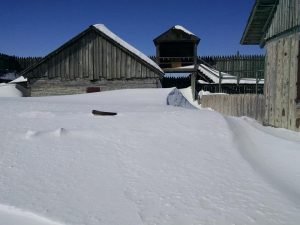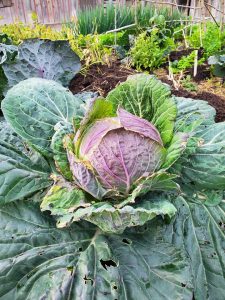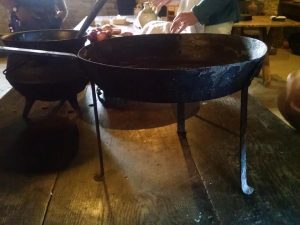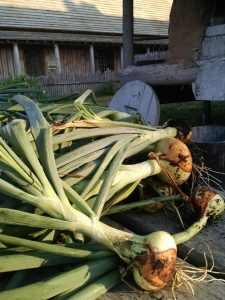 Michilimackinac in the 18th century was an important transshipment point for the fur trade. With the abundance of material goods and huge shipments of supplies coming through the Straits of Mackinac on the waterways all summer long, there were many opportunities to source fresh and tasty foods. Some items were sourced from the farms at and around Detroit, while others came through the Great Lakes from Albany, New York and beyond. Once the lakes and rivers froze, however those shipments stopped and the eating habits of the Michilimackinac population had to change.
Michilimackinac in the 18th century was an important transshipment point for the fur trade. With the abundance of material goods and huge shipments of supplies coming through the Straits of Mackinac on the waterways all summer long, there were many opportunities to source fresh and tasty foods. Some items were sourced from the farms at and around Detroit, while others came through the Great Lakes from Albany, New York and beyond. Once the lakes and rivers froze, however those shipments stopped and the eating habits of the Michilimackinac population had to change.

 Basic ingredients such as flour, salt, sugar, salted butter, dried beans, various meats and dried peas would commonly travel in bulk by canoe in wooden barrels, boxes and sturdy linen sacks. Candied citron, dried plums and dried currants often made their way to the dinner tables at Michilimackinac baked into sweet or savory dishes. More specialized foods, such as hard cheeses, oysters packed in salty brine, or wine, tea and chocolate were also known to make the journey through the Great Lakes.
Basic ingredients such as flour, salt, sugar, salted butter, dried beans, various meats and dried peas would commonly travel in bulk by canoe in wooden barrels, boxes and sturdy linen sacks. Candied citron, dried plums and dried currants often made their way to the dinner tables at Michilimackinac baked into sweet or savory dishes. More specialized foods, such as hard cheeses, oysters packed in salty brine, or wine, tea and chocolate were also known to make the journey through the Great Lakes.
Some amount of fresh vegetables would have been grown locally in small gardens and put aside for winter use. Original sources recommend storing root vegetables in damp sand and continually checking on them to promptly remove any that began to go bad. Many houses had cellars and they created the perfect environment for keeping things like dried corn, carrots, eggs, turnips, parsnips and perhaps leeks or onions. Vegetables were a huge part of the 18th century diet and many cookbooks devote a significant section to the preparation of them.
Small game, passenger pigeon, duck, goose or swan occasionally made it to the plate and there was nearly always some sort of fish to be caught in the waters. Ice-fishing in the winter using nets, spears or hooks was the usual method. A whitefish soup with vegetables and a piece of bread would make for a deliciously warming winter meal.

 Large quantities of food passed through Michilimackinac every year throughout the 1770s. Households became very good at planning ahead and using what was available. Dried, salted and carefully stored grains, meat, eggs and vegetables were the daily foods on the winter tables at Michilimackinac.
Large quantities of food passed through Michilimackinac every year throughout the 1770s. Households became very good at planning ahead and using what was available. Dried, salted and carefully stored grains, meat, eggs and vegetables were the daily foods on the winter tables at Michilimackinac.
Although Colonial Michilimackinac is covered in snow right now, we are looking forward to lighting the fireplaces once again in May. Our food programs change throughout the year, so be sure to stop by and see what is on the menu. Tickets and more information can be found by clicking here.









